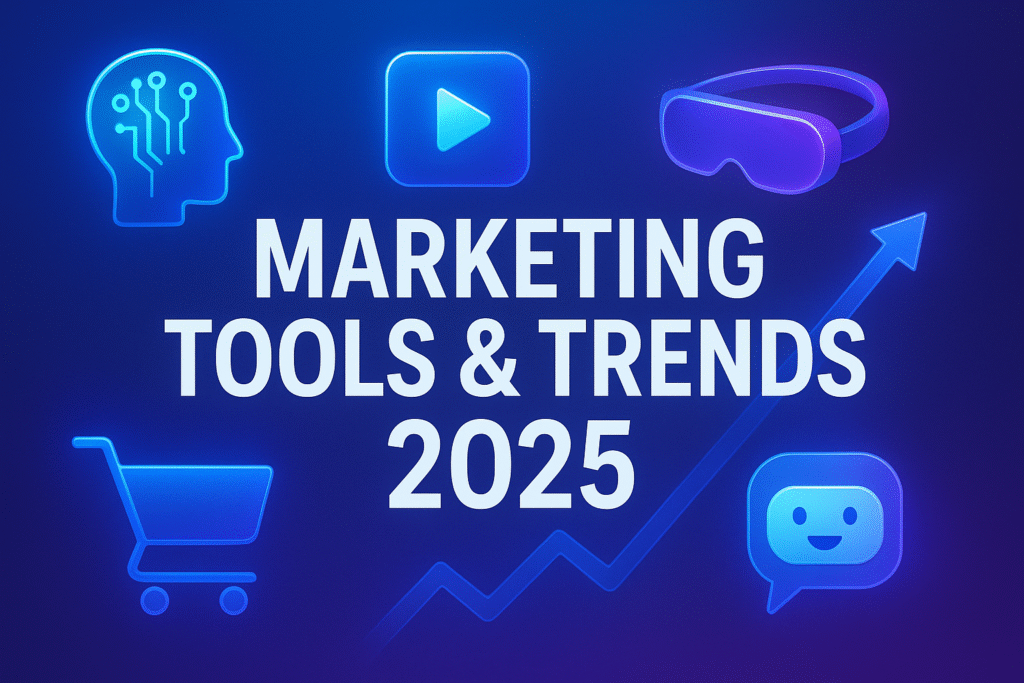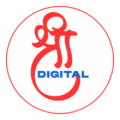
Marketing is an ever-evolving field, and every year brings new tools, technologies, and strategies that redefine how brands connect with audiences. In the fast-paced digital world, staying ahead of the curve is not just an advantage – it’s a necessity. This year, businesses will need to adopt smarter marketing tools and trends 2025 if they want to stand out in an increasingly competitive landscape. Let’s explore the key marketing tools and trends that will dominate this year.
👉 “If you’re looking to implement the latest marketing tools and trends for your business, our team at Shri Digital can help you craft a winning strategy.”
1. AI-Powered Marketing Tools
Artificial Intelligence (AI) continues to transform marketing by enabling businesses to personalize experiences, automate processes, and analyze data like never before. When it comes to marketing tools and trends 2025, platforms like ChatGPT, Jasper, Copy.ai, and Writesonic are helping marketers craft content faster and more effectively. Similarly, AI-driven analytics platforms such as HubSpot AI, Google Analytics 4, and Hootsuite Insights provide deeper insights into customer behavior.
Brands are also leveraging AI chatbots for real-time customer support and lead nurturing, ensuring 24/7 engagement. This year, expect AI to become even more integrated into daily marketing strategies, from predictive analytics to automated ad targeting.
2. Short-Form Video Dominance
Short-form videos are no longer just a trend – they are the backbone of digital marketing. Platforms like TikTok, Instagram Reels, and YouTube Shorts have revolutionized content consumption. These bite-sized videos capture attention quickly and deliver impactful messages within seconds.
This year, brands that create authentic, entertaining, and value-driven short videos will see higher engagement rates. Tools like CapCut, InShot, and Canva Video Editor make it easy for marketers to produce professional-quality videos without large budgets. Storytelling through quick clips will continue to dominate user feeds.
3. Voice Search & Smart Assistants
With the rise of devices like Alexa, Siri, and Google Assistant, voice search optimization is becoming crucial. More users are now searching using voice commands, and brands need to adapt their SEO strategies accordingly.
Optimizing for conversational queries, using long-tail keywords, and ensuring websites are mobile-friendly and fast-loading will help businesses rank better in voice search results. Tools like SEMRush, Ahrefs, and AnswerThePublic are useful for discovering voice-friendly keywords.
4. Influencer Marketing Evolution
Influencer marketing has matured significantly. Rather than focusing only on celebrities, brands are collaborating with micro and nano influencers who have smaller but highly engaged audiences. Authenticity matters more than follower count.
This year, we’ll see an increased emphasis on long-term influencer partnerships instead of one-off promotions. Tools like Upfluence, AspireIQ, and Influencity help brands identify, manage, and measure influencer collaborations effectively.
5. Interactive Content
Static content is losing its charm. Interactive formats such as polls, quizzes, surveys, AR filters, and 360-degree product views are driving higher engagement. Consumers want to participate, not just observe.
Brands are now using tools like Typeform, Outgrow, and Ceros to create interactive experiences that not only engage but also capture valuable data. This trend helps businesses personalize offerings and improve customer journeys.
6. Sustainability & Purpose-Driven Marketing
Today’s consumers are more socially conscious than ever before. They prefer brands that align with their values, whether it’s environmental sustainability, inclusivity, or ethical sourcing. Marketing is no longer just about selling products; it’s about storytelling and standing for something meaningful.
Brands that highlight their purpose and back it up with genuine action will win customer loyalty. Expect campaigns centered on eco-friendly packaging, charitable initiatives, and transparent business practices to gain momentum this year.
7. Personalization at Scale
Generic marketing messages no longer cut it. Customers expect personalized experiences tailored to their interests and behaviors. With the help of tools like Mailchimp, ActiveCampaign, Klaviyo, and Salesforce Marketing Cloud, businesses can deliver hyper-personalized emails, product recommendations, and ads.
This year, personalization powered by AI will allow marketers to predict customer needs before they even express them, leading to stronger relationships and higher conversions.
8. Augmented Reality (AR) Experiences
AR is no longer futuristic – it’s here and becoming mainstream. Brands like IKEA, Nike, and Sephora are already using AR to enhance shopping experiences, allowing customers to visualize products before purchase.
With tools like Spark AR Studio, Zappar, and Adobe Aero, businesses of all sizes can now create immersive AR experiences. This year, expect more brands to integrate AR into ads, apps, and social media campaigns to boost engagement and conversions.
9. Social Commerce Growth
Social media platforms are rapidly evolving into shopping hubs. Features like Instagram Shops, TikTok Shop, and Facebook Marketplace enable users to discover, browse, and purchase without leaving the app.
This seamless integration of shopping into social platforms makes impulse buying easier and enhances the customer journey. Businesses that optimize their product catalogs and leverage social proof will dominate in this space.
10. Data Privacy & Cookieless Marketing
With increasing concerns around privacy and stricter data regulations, marketers are preparing for a cookieless future. Instead of relying heavily on third-party data, brands are shifting towards first-party data collection through newsletters, loyalty programs, and gated content.
Tools like Segment, Tealium, and BlueConic help businesses manage and leverage customer data responsibly. Transparency in data usage and offering real value in exchange for customer information will become a priority this year.
Final Thoughts
Marketing in today’s world is no longer about following trends blindly. It’s about strategically using the right marketing tools and trends 2025 while aligning with customer expectations. This year will be marked by AI integration, short-form videos, personalization, and purpose-driven campaigns. Brands that adopt these trends early will not just survive but thrive in the competitive marketplace.
Whether you’re a startup or an established enterprise, staying agile and adaptive is the secret to success. Keep experimenting, keep innovating, and most importantly, keep your customers at the heart of every strategy.
